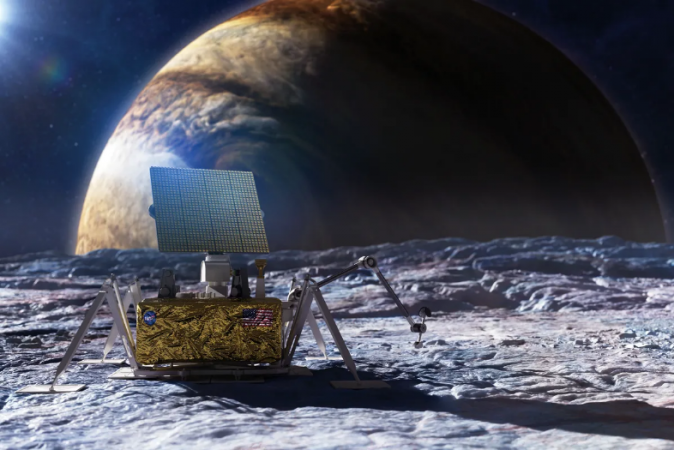
USA: A recent study provides explanations for why Jupiter's moon Europa rotates more slowly than its interior. The new computer-modeling-based research is the first to show that Europa's ocean currents may be contributing to the rotation of its icy shell, even though there is strong evidence indicating that Europa contains a vast internal ocean beneath its icy outer shell.
In the search for life outside of our home planet, Europa has become an intriguing target due to the possibility that it contains large oceans. Without actually touching down on Europa's surface, it is predicted that even a passing spacecraft should be able to capture images of its vast oceans. Additionally, it has been hypothesised that the oceans of Europa may hold more water than the sum of the oceans on Earth.
The possibility that Europa's shell could be detached, floating freely, and rotating at a different rate than the ocean below it and its rocky interior has long been recognised by scientists. Researchers speculate that water may be pushing against the icy shell of the moon, which may be speeding up and slowing down the rotation of the icy shell as a result of the recent study.
Also Read: TCS unveils 5G-enabled cognitive plant operations adviser
According to study author Hamish Hay, "it was known through lab experiments and modelling that heating and cooling of Europa's ocean may drive currents. Now, our findings reveal a never-before-considered coupling between the ocean and the rotation of the icy shell.
The horizontal force that Europa's ocean has on the icy shell above it is known as drag forces, and estimating them was a crucial component of the study. The study explains how the strength of the ocean currents on Europa and their drag against the ice layer produce the geological features seen on the moon's surface.
Also Read: Beyond lavish lifestyles, Urbana makes lively residential space for all
Based on the information gleaned from NASA's upcoming Europa Clipper mission, it may even be possible to pinpoint the rate at which the icy shell rotates.
Scientists could examine the surface features of Europa and determine whether the moon's icy shell has moved over time by contrasting images captured by Europa Clipper with previously existing images from NASA's Galileo and Voyager missions.
Currently in development, the Europa Clipper mission is scheduled to launch in 2024. In 2030, the spacecraft will start orbiting Jupiter, and its primary scientific objective is to ascertain whether Europa is capable of harbouring life.
Also Read: Experts urge the creation of a globally enforceable agreement to address space junk
Its other goals include exploring the subsurface oceans' composition and geology as well as the moon's icy shell's nature.